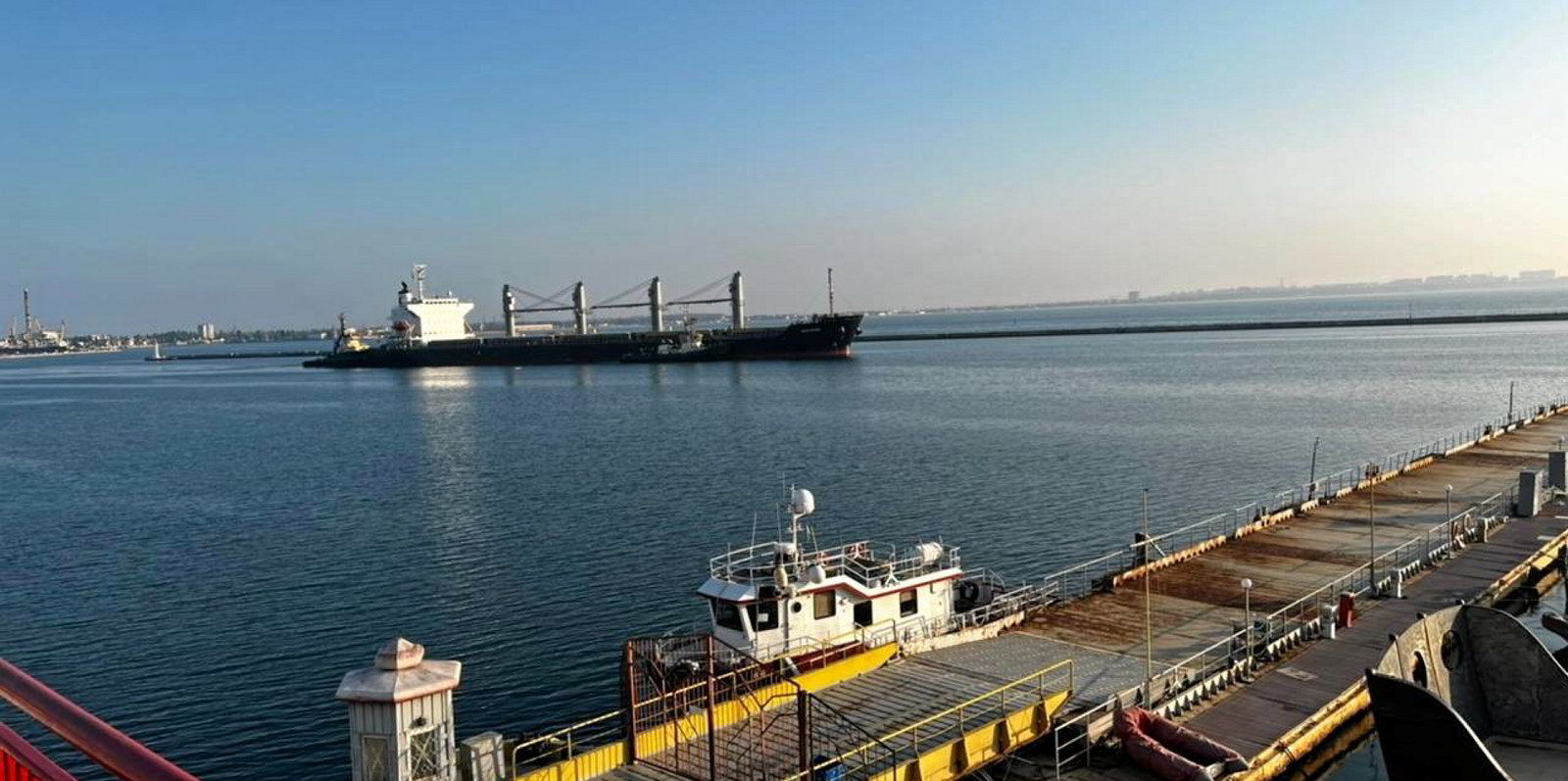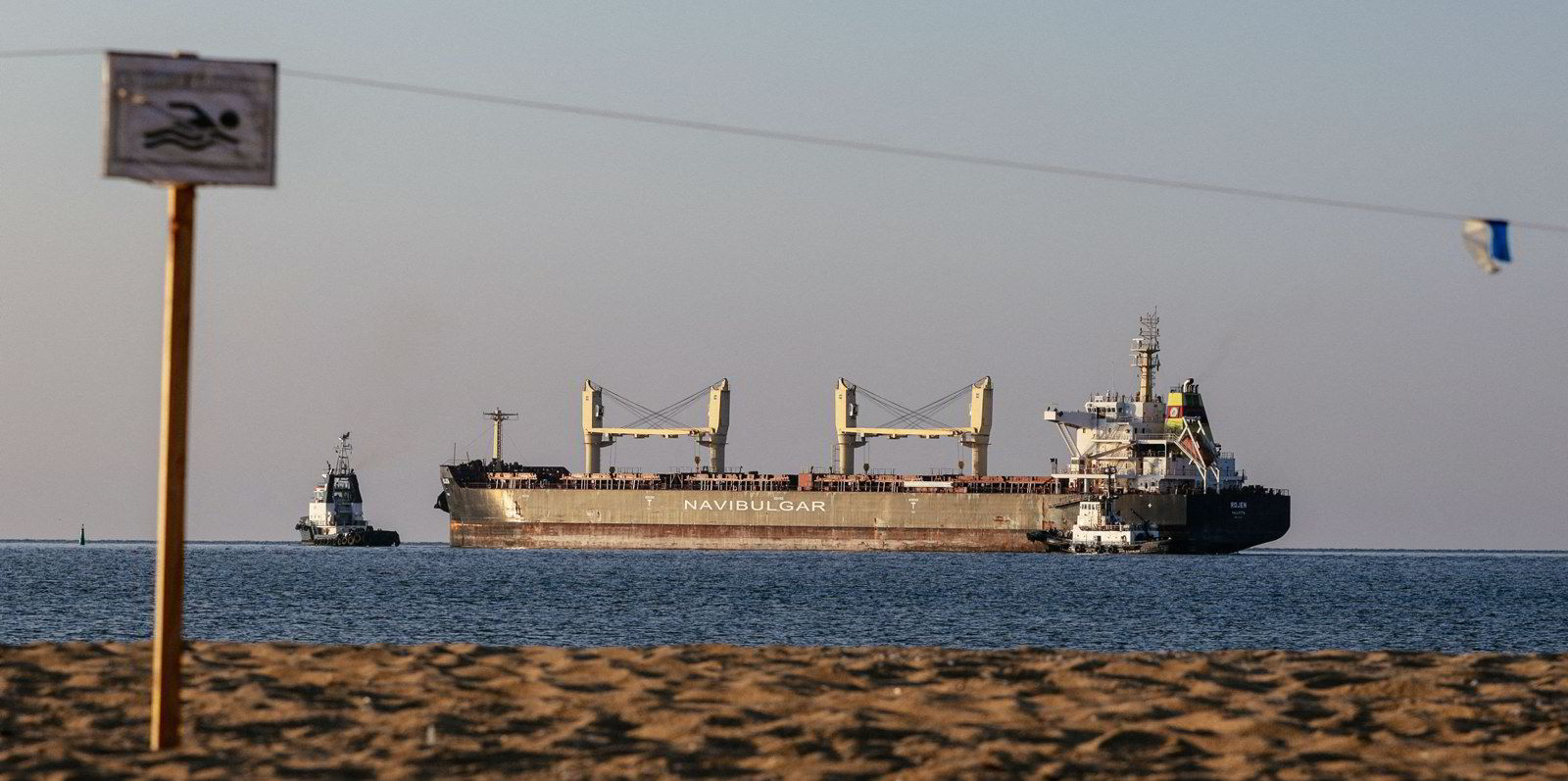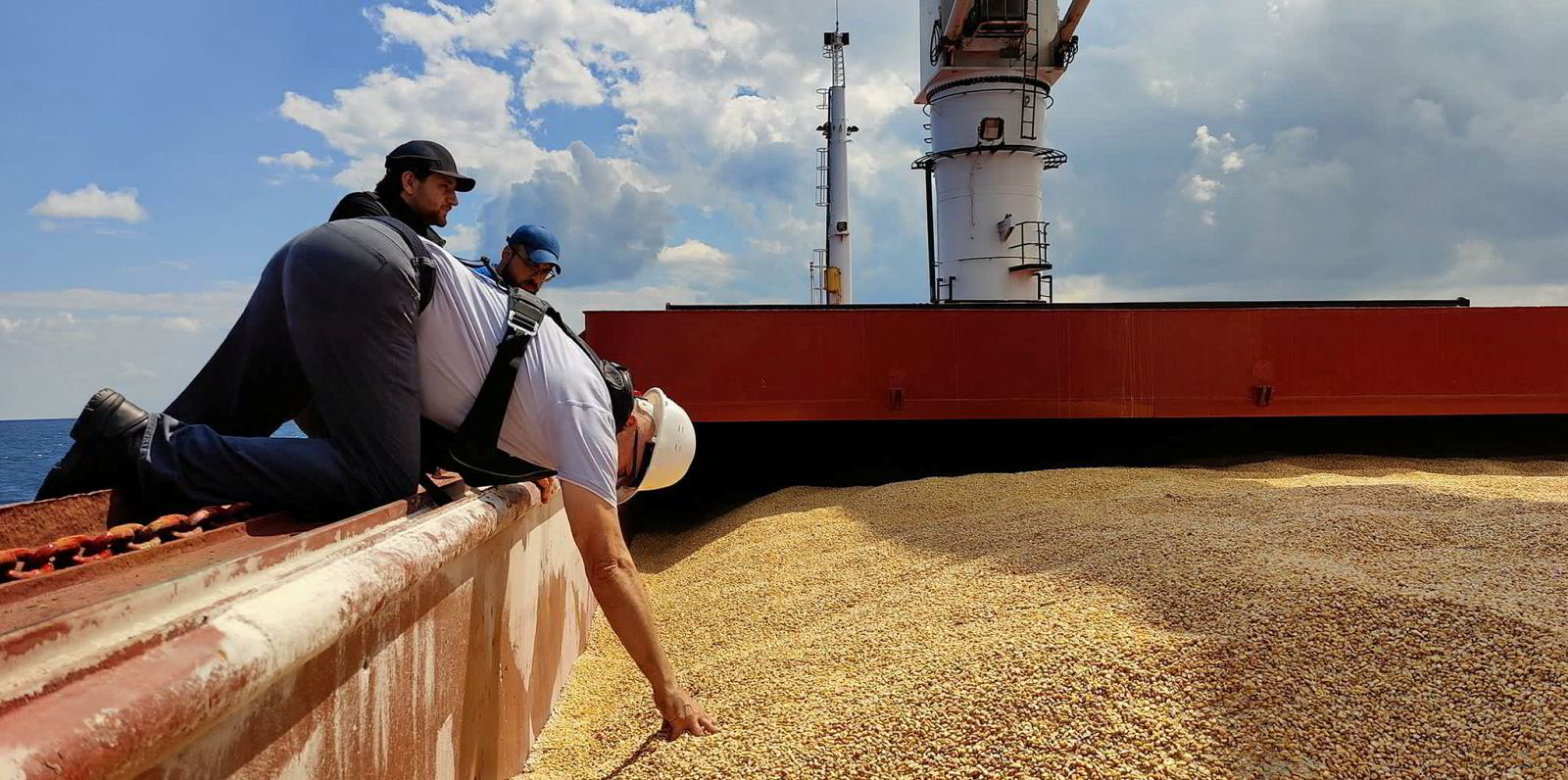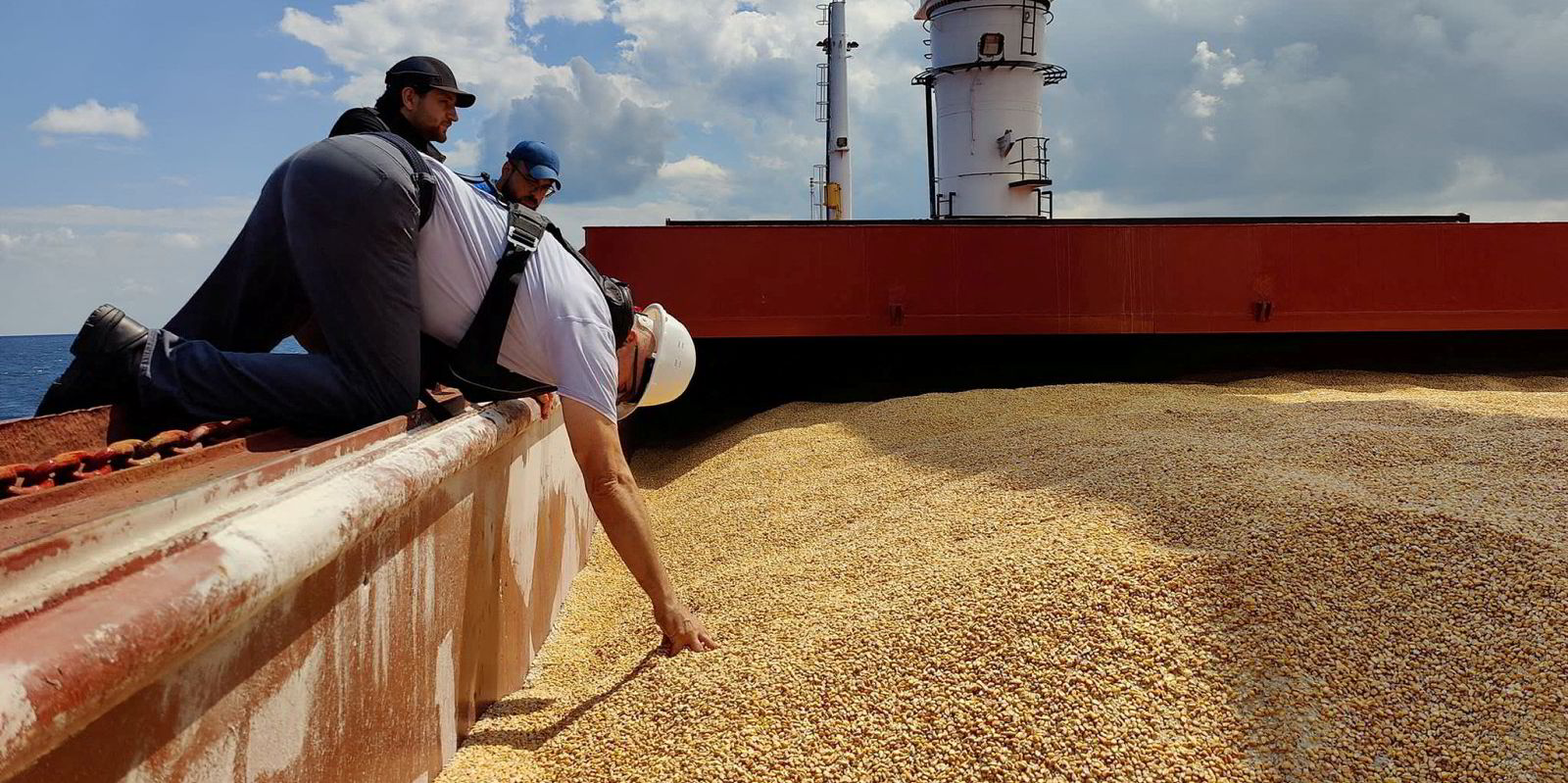Inquiries for Ukrainian grain fixtures are heating up as a UN-brokered safe-passage deal for vessels is being gradually implemented.
However, the market is still in flux as players are busy weighing the risks and opportunities of carrying Ukrainian grain, market observers say.
Very few, if any, fixtures are known to have been concluded yet with shipowners, charterers and insurers still feeling each other out to settle on price levels.
The first fixtures to be made, possibly as early as next week, might be settled at twice the average ‘conventional’ earnings, according to an Athens-based specialised dry cargo broker.
“Rates out of Ukraine on new deals are still being worked at so the price is still being discovered,” said Vassilis Mouyis, joint founder of Doric Shipbrokers.
“We understand not much has been concluded as the various stakeholders assess the risk, including underwriters’ war risk insurance,” he told TradeWinds.
“Time charter rates could be concluded at twice, if not more, the conventional market as the execution of this trade is still being tested,” Mouyis added.
Fixture talk revived as four more bulkers were en route carrying Ukrainian grain shipments on Friday under a UN-brokered safe passage deal, following the first successful export carried out earlier this week.
Most of these shipments may be in execution of chartering deals arranged before Ukrainian's biggest ports shut down following Russia's invasion on 24 February.
What's the deal?
Out of the five bulkers carrying grain, four were already laden in the blocked ports of Odesa and Chornomorsk.
It isn’t known if, or in what way, those ships' prior charter arrangements were amended to reflect their involuntary four-month stay and the current risk situation.
According to a Reuters article on 5 August, however, most deals to buy grain from Ukraine were cancelled after the invasion, which means that sellers need to find new buyers.
All that is known about their voyages is the size of their load and their destination: the 29,300-dwt bulker Razoni (built 1996) is en route to Tripoli, Lebanon; the 12,200-dwt Polarnet (built 2016) is heading to Karasu, Turkey; the 38,200-dwt Navi Star (built 2011) will unload at Ringaskiddy in Ireland; and Navibulgar’s 41,600-dwt Rojen (built 2019) is en route to Teesport in the UK.
Managers at Navibulgar didn’t immediately respond to a request for comment.
The one vessel most likely to be underway under a newly fixed charter is the 13,500-dwt Fulmar S (built 2007), which is sailing empty towards Chornomorsk.
Executives at the company’s Turkish-based managers Armador Shipping didn’t immediately respond to a request for comment.
All in all, about 85,000 tons of Ukrainian grain are currently seaborne under the UN scheme, which international officials admit is still in testing phase.
Far more vessels need to travel in the corridors to approach pre-war traffic levels that would help avert a global food crisis, Ukraine’s infrastructure minister Oleksandr Kubrakov tweeted on Friday.
“We have to provide the processing of 100 [vessels] per month to be able to export the necessary amount of foodstuffs,” Kubrakov said.






